Lost track of where your money has gone? Wish you had more cash left at the end of the month? Keep a spending diary to make sure you spend less and save more. Plus, grab your free printable spending diary template.
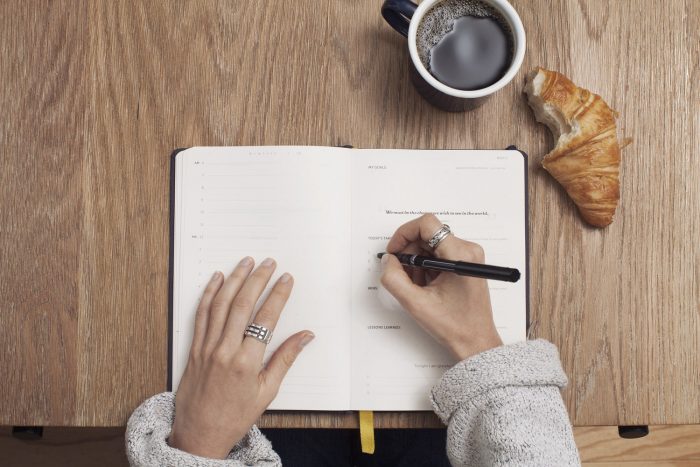
£10 sign up bonus: Earn easy cash by watching videos, playing games, and entering surveys.
Get a £10 sign up bonus when you join today.
Join Swagbucks here >>
Pay day can be very bittersweet.
On one hand, you’re excited to finally have some money hit your bank account so you’re not in your overdraft anymore. On the other hand, less than 24 hours after being paid and the money has mostly gone on bills, bills and more bills!
Having very little left after payday sucks!
Start cutting costs
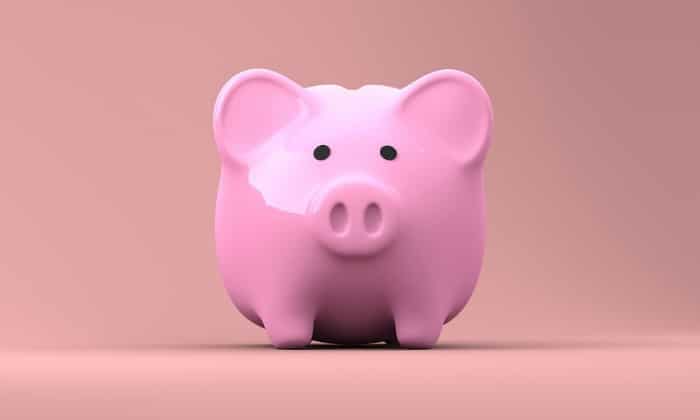
One very easy way to ensure you’ve got more money is to cut back on your bills and outgoings.
You could:
- Look at the general cost of average household bills each month to see if you’re overspending
- Check if you can pay less council tax
- Save at the supermarket
- Ditch expensive TV packages
But what if you’ve already done all that?
What if you’ve cut out and sliced back on all your bills? What if there’s nothing left to cut from your monthly expenses?
Things can start to feel utter rubbish that even after being the thriftiest you can with your bills, there’s barely anything left in your bank account.
Do you have to hold your breath when you check your bank balance towards the end of the month, hoping that you’ll have a few quid left?
Do you look with only one eye open, hoping it won’t be as bad as you imagine?
Wouldn’t it be nice to see a healthier balance and keep on top of your finances?
There is one little thing you can do which may revolutionise the way you manage money.
It’s not high tech and you don’t need to pay out loads of money to get it working.
Keep a spending diary
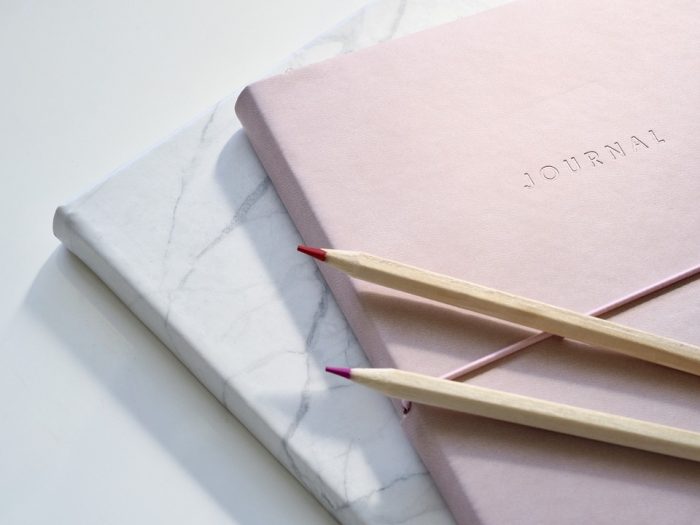
Keeping a spending diary is a sure-fire way to track what you buy on a day to day basis.
You may think it’s a pointless exercise and won’t show you anything, as you already know what you buy.
However, by keeping track of every single penny that leaves your purse, you will get a good understanding of what actually happens to your money after it leaves your bank account.
Why should you keep a spending diary?
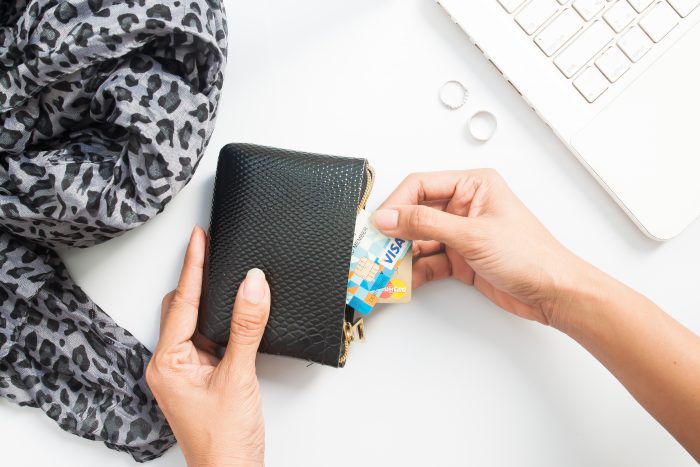
How many times have you drawn £20 out of the bank and it’s just disappeared? You’ve not dropped it, it hasn’t fallen out from your pocket, but it gets spent as quick as a flash.
You can’t remember or work out how it went so quickly.
Having a spending diary is all about being able to track what you’re doing and what you’re spending out on.
It’s easy to forget so you can use it to realise if you’ve been overspending and then see where you can cut back.
This will allow you to free up money for other things – whether it be spending on something fun or filling a hole in your budget.
Does a money diary work?
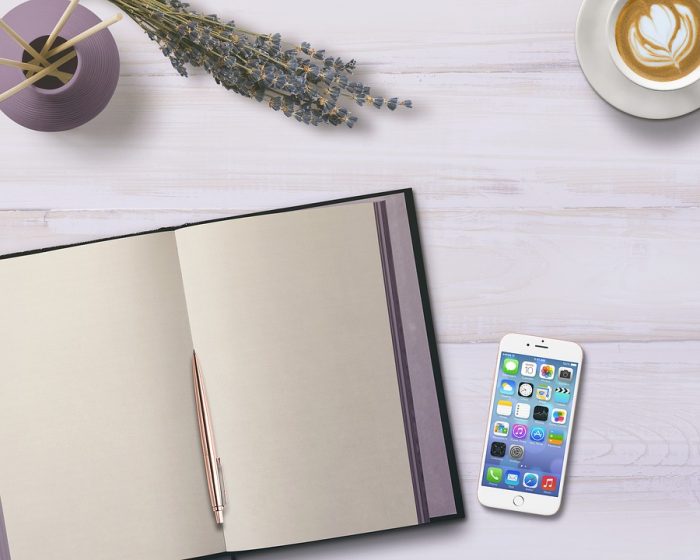
In theory, yes a spending diary does work.
In practice, it also works :)
Kelly-Marie Dudley, a member of the Skint Dad Community Group, shared with us her experience of tracking her spending.
It’s clear that when you start looking at what you can do with your savings it gives you the motivation to try it yourself.
She told us:
“I had a list on my phone of all the cr*p I decided not to buy and it was really encouraging. From a takeaway on a Saturday night (£25) to a coffee on the way to work (£3), it was hugely motivating to see the savings mount up!”
Kelly-Marie was able to free up £500 a month by tracking her spending and keeping a spending diary.
“I used to buy a cup of tea, a fruit shoot and a couple of marshmallow treats after swimming, twice a week.
“Over the course of a year, that costs £457.”
Her savings are “the cost of a flight to NYC”. She then started to wonder whether she’d prefer to sit in a leisure centre café or fly to America.
I think I know what I’d prefer…
How to keep a spending diary
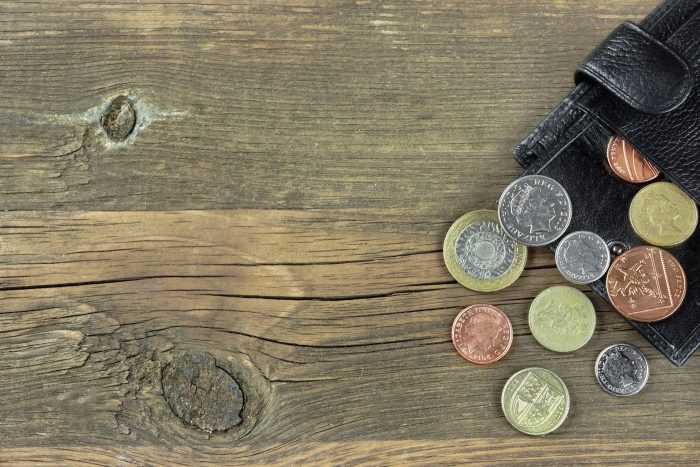
Keeping a spending diary is easy.
You don’t need to download any apps. You don’t need to sign up for an online subscription. You don’t need to design a fancy pants spreadsheet using Excel to make it work.
In fact, the easiest and best way to keep a spending diary is doing it the old-fashioned way.
With a pen, pencil, crayon, felt tip, or any other writing implement, you are able to jot down what you spend money on while you’re on the go.
Then you just need a scrap of paper and not even anything fancy. You may have a notebook, or a few pages spare in the back of your diary, or you can use the back used envelopes.
It really doesn’t matter.
What you really need to do is just get into the swing of writing down what you’re spending money on.
Spending diary template
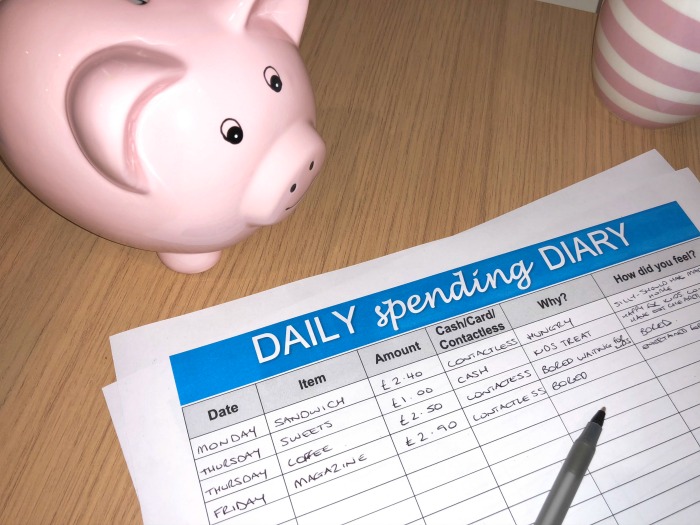
If you want to make sure you record the same thing each time, scroll down (but keep reading first – you don’t want to miss the good tips) and you can grab your free printable spending diary template.
When should you use your spending diary?
When you make entries into your spending diary comes down to how it would work best for you.
Really, you need to be updating it every day – even if you’ve spent nothing – and you need to make a note of everything. EVERY SINGLE PENNY.
It’d be best to make a note of what you’ve spent money on as soon as it happens, which gives you less chance to forget. Although I appreciate getting out a notebook in a shop when you’ve got kids pulling at your arm isn’t the easiest thing in the world!

The trouble with trying to remember everything and doing it once a day in the evening might allow you time to forget.
It’s easy enough to think that you’ve got receipts from what you’ve bought, but it’s the smaller things that might get missed.
Are there times when you might give £1 for a birthday collection at work, you’ve given your kid 50p for the school dress down day or if you’ve been charitable and dropped 2p in a collection bucket in town?
They can be tiny amounts of money and you may think nothing of it.
However, that odd £1, 50p and 2p add up VERY quickly.
Doing that every few days is when the spiral of unknown spending starts.
Even just twice a week, and those little random amounts, it comes to a total of £158.08 over the course of a year.
And that’s without tracking another random spending you might be doing.
So, where you can, try to write down what you’ve spent out on as soon as it happens.
What do you record in a spending diary?

You want to make sure you keep enough information, so you can look back and know what you’ve been buying.
Be sure to record:
- When?
Make a note of the date (and maybe time) of when you make a purchase. This will let you look back and see if there is a pattern around your spending, like do you spend more on a certain day, or on an evening?
- What item?
Write down what you’ve actually bought, showing each item if there is more than one thing on a receipt.
- How much?
Show how much you spent on each item.
- Optional
If you want to really give it some thought, it’s good to show what method you used to buy the item using cash, card or contactless.
Why not also make a note of why you made the purchase?
So, for instance, Tuesday at 9:30 AM – can of coke – 70p – I was thirsty.
On top of that, add how you felt about it.
So, it could be: Tuesday, 20th, 9:30 AM – can of coke – 70p – I was thirsty – annoyed that I didn’t bring a bottle of water from home
Or it could be: Friday, 23rd, 5 PM – top – £6.49 – I wanted a new top for a night out tomorrow – great! It was on sale!
Printable spending diary template
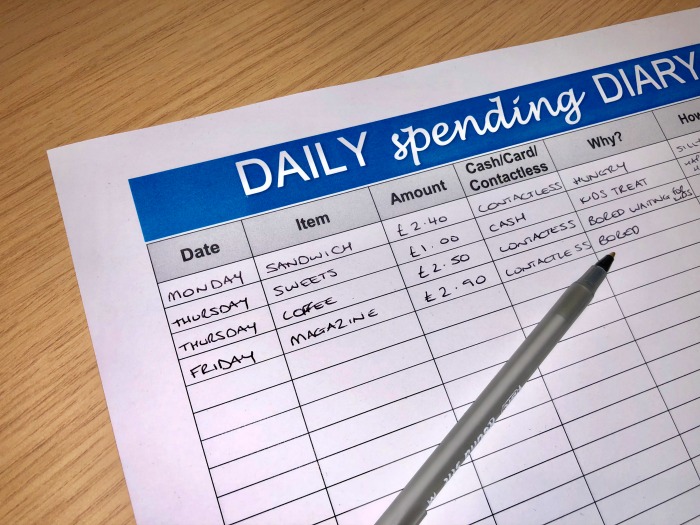
To help make sure to write the same things down each time, we’re sharing this template spending diary.
Feel free to download this free printable to give you a helping hand about what to record.
FREE DOWNLOAD > Spending diary template
Don’t cheat

The longer you keep your diary, you may start feeling a little guilty about how many random purchases you make each day.
Please, please, please don’t let put you off from keeping a spending diary. Just continue to be honest about what you spend money on.
There is no pass or fail when doing this. You don’t have to share your diary with anyone and you’ll only be using it to make your finances better going forward.
It really is best to keep jotting down everything you buy, even if you think it’s a one-off (a pretty top for a party, a bottle of wine on a Wednesday night (bad day at work!!) or a lottery ticket on a Saturday (cause you really don’t want to go back to work on Monday).
Again, those little things do add up and if you miss them off your spending diary you won’t be able to see a full picture of how you can make your spending habits better.
At the end of the day, you’ll only be cheating yourself.
What happens next?

Your spending diary will give you a glimpse into what you actually do with your money. You may not even realise how quickly it starts to add up and might shock yourself into cutting back straight away.
You can then start thinking if you can cut out or change some of the spending habits you’ve made to save cash and keep more money in your pocket.
Really, you need to give yourself a few weeks (a month is best) to get a good understanding of how you’re spending your money on a day to day basis.
Are there any patterns?
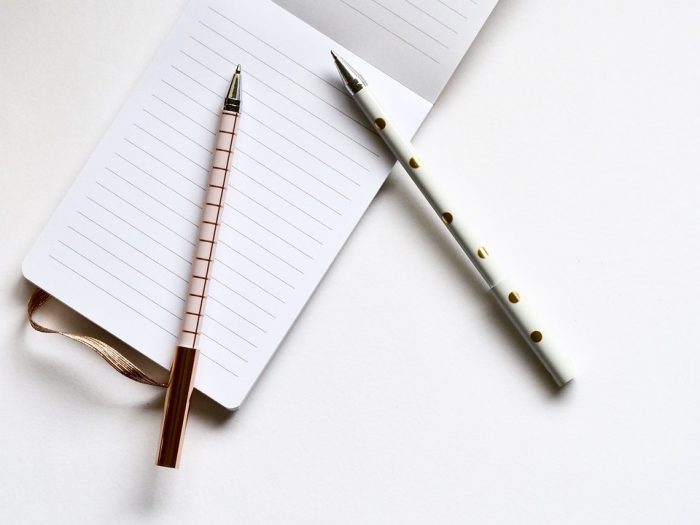
Keeping a spending diary for a good amount of time will help see if there are any patterns with your spending.
It’s these patterns that will start to help you address your spending habits and help you understand what you can stop spending money on.
For example, if you find you buy a coffee from a café every Tuesday morning and it cost you £3 (remember that’s £156 a year), you may find that getting a travel mug and taking your own drink will help you break a habit you may not have realised you had.
If you buy your child a snack from the corner shop after football practice each week, why not save your money and prepare a snack from home, again saving your spending.
See what you can change
You will also be able to see how you’ve been spending your money by noting down if you spend using cash or a card.
If you find you’re using contactless for payments (cause it’s so easy!) maybe it’s time to deactivate that option on your phone to give you less temptation.
It could also be a time to consider going out using cash only if your card makes payments too accessible, or consider using the budgeting envelope system.
What’s behind your spending?

If you’ve also been adding a comment on your spending diary about your reasons for making a purchase it will really help to look back and understand your thinking.
Why are you actually buying things? Is it a need or a want? Was it necessary to spend or could you, with hindsight, have avoided it?
Even adding details about why you made the purchase and how you felt about it can give you an opportunity to think about why you made the spend.
Looking back, you can also see how you felt when you made the purchase to how you feel today. So, if you did buy a top in a sale and felt great at the time, today you may not feel so good as you realise that you’ll only wear it once.
Knowing you’ll have to answer these questions might also make you challenge yourself to spend money before you go ahead and do it.
Save more
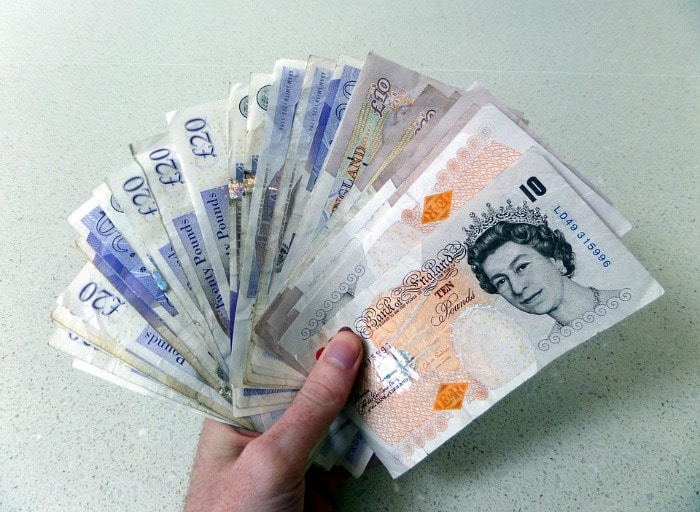
For some of the things you buy, you may just not want to cut them out completely – and that’s ok too!
Saving money is one thing, but no one expects anyone to live miserably.
Instead of ditching what you like, try to swap to a cheaper alternative. Instead of using your spending diary as a way to zero your impulse buys, it’s just as useful to work out ways to lower how much you spend.
Your spending diary will no doubt have spotted some trends. If you see you’re spending a lot on coffee each month (but you love that caffeine hit), why not stop buying from a café but invest in a coffee machine.
One month of not spending £3 a day saves you £60 which could help you buy yourself a coffee machine for home.
Maybe you love a pack of crisps so you grab one from the local shop on your lunch break. Instead of spending 80p+, buy a multi-pack from the supermarket next time you do a shop, and store them under your desk at work.
Using a spending diary is a great way to see what you’re spending on a day to day basis (that you might forget or not even realise you buy) and then helps you cut down on any bad habits you’ve made.
Give it a go and see how much you can save by just being more conscious about where your cash goes.
Read next: Save £100 Every Month with These 5 Simple Lifestyle Changes
- TopCashback Sweet Treats Giveaway this Easter 2025: ALL answers - 7 April 2025
- Tesco clothing sale 2025 – 25% off F&F sale dates - 27 March 2025
- Next sale dates 2025 and how to book an early VIP slot - 17 March 2025
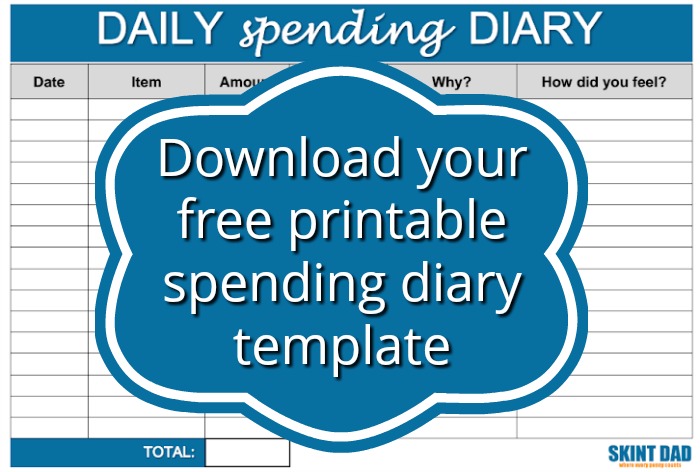

Tee says
Thanks so much for the information! Showing love from USA.